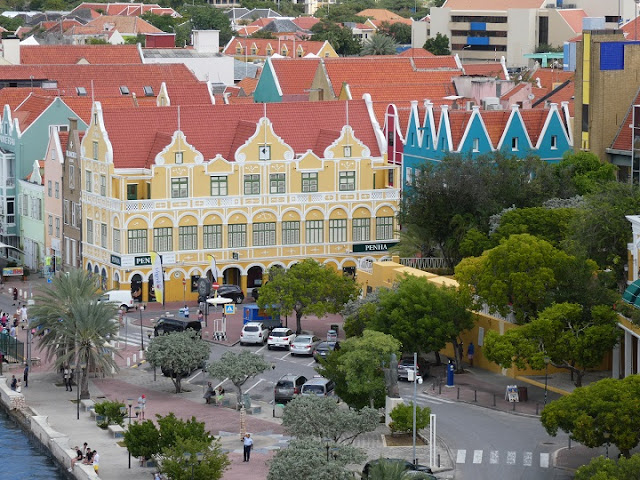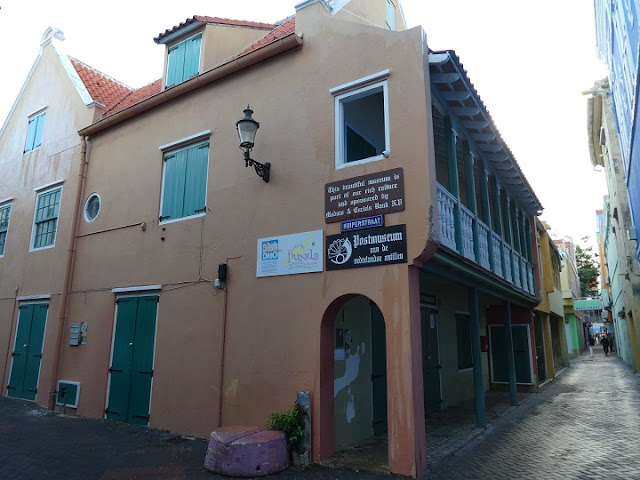After Panama, our next stop was Costa Rica. This was one of my favourite places of the whole cruise, mainly as I saw sloths in the wild. See my blog on sloths and other animals in Costa Rica.
From Costa Rica we headed back to the ABC islands, and went to Curacao. Curacao is one of the ABC islands and a constituent country of the Netherlands. It is part of the Lesser Antilles group. It has 38 beaches and desert landscapes and over 70 dive spots. There are lots of caves. Language is Papiamentu, Dutch and English. Currency is the Antillean Guilder (ANG).
The capital Willemstad is a UNESCO world heritage site, "Historic Area of Willemstad, Inner City and Harbour, Curaçao". Willemstad is an exceptionally well preserved example of a Dutch colonial trading settlement. It is separated into 2 sides by Sint Anna Bay. Punda, the original settlement from the 17th c. is on the east side and is filled with colourful shops and restaurants. It is adjacent to Fort Amsterdam. Otrobanda on the other side is a maze of narrow streets and alleyways. The Queen Emma Bridge is a swinging pontoon bridge that connects the 2 sides. The architecture is called Curacao Baroque and is characterized by curved lines. It is influenced by Dutch colonial concepts and also tropical Caribbean styles.
There were 2 larger cruise ships already at the Mega Cruise Terminal so we were lucky and were able to sail up the Sint Anna and stop at the terminal there, although there was no real terminal building. Sailing into St Anna Bay, the pontoon bridge has opened and can be seen on the left of the photo -
Looking down onto the colourful Punda -
And looking the other way, over Otrobanda -
The pontoon bridge soon went back into place and people were able to cross again -
Unfortunately we only arrived at 2pm then the officials took ages clearing the ship and we could only get off at 3.30pm. Also we were told there was a 10 pm curfew in Curacao, so had to be aboard by 9.30 pm. I decided not to try and do a tour of the island, and instead stayed in Willemstad.
When we were on neighbouring Bonaire, we were told about lionfish and how it is an invasive species and people are encouraged to eat it. Here on Curacao someone is making jewellery out of lionfish -
Looking over to Punda with the pontoons of the pedestrian bridge clearly visible -
The original pontoon bridge -
The Queen Emma bridge was built in 1888 and has been completely renovated several times, the most recent being 2005-6. The bridge is hinged and at the opposite end an operator in a small shelter controls two diesel engines turning propellers. The propellers are mounted perpendicular to the length of the bridge and allow it to swing parallel to the shore. The process only takes a few minutes to complete.
I had a quick look around the Otrobanda side, but there were no tourists there or tourist shops.
After using the free wifi in Brion Square I went over the bridge to Punda. This was full of jewellers, tourist shops and bars.
Maduro & Curiel's Bank and the postal museum -
Some more street art -
Our ship


































No comments:
Post a Comment